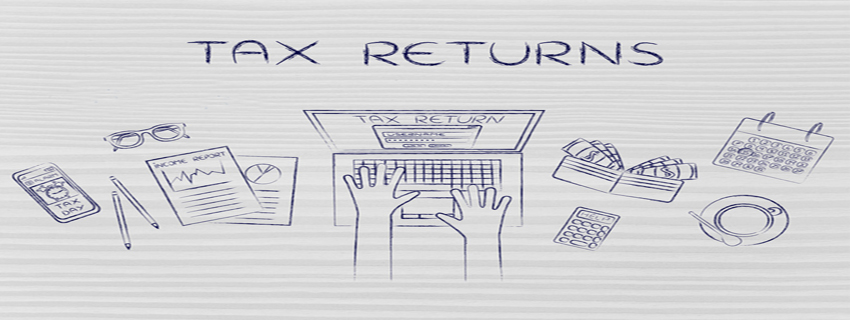Step By Step Guide To File Your Income Tax Return
Mrinal Sen, an engineer by profession, had received Form 16 last week only. Every year he gets his income-tax (I-T) returns filed through a Tax Consultant because of lack of confidence. There are others like Mrinal, who would not have time or knowledge about e-filing. With July 31 as the deadline, you are left with only few days to e-file the I-T returns. E-filing is not as cumbersome as you think. You actually don’t need help of a professional to file ITR if your income is only from salary or interest income from banks.
But if you have income from other sources such as a property transaction or have got any capital gains in the financial year then you may seek professional advice. E-filing not only offers you the convenience of filing taxes anytime and anywhere but also speeds up the process. Salaried employees having total income of up to Rs5 lakh including income from other sources up to Rs 10,000 were exempted from filing income tax return for assessment year 2011-12 and 2012-13, respectively but the Central Board of Direct Taxes (CBDT) said on Tuesday 23rd July 2013 that filing income tax returns has now become mandatory even for salaried individuals earning up to R5 lakh per annum for AY 2013-14. Individuals whose total income for FY 2012-13 is below Rs. 5 lakh they can file paper returns, or e-file their returns but for others e-filing is the only option.
E-filing is an easy, fast and secure method of filing of income tax return. We tell you how to go about filing your returns online and things to keep in mind.
The first step to e-filing is to register on website of Income Tax India https://incometaxindiaefiling.gov.in/
Select the correct form
The next step to filing your returns would be to select the correct forms, depending on your sources of income. You can download the appropriate form from Income tax website
There are primarily four types of forms applicable for individuals:
ITR 1 (Sahaj), if you have income from salary or/and pension; income from other sources, such as savings bank account and fixed deposit; and income from one house property.
ITR 2 is applicable for individuals or Hindu Undivided Families (HUF) who have income from Salary; house property (more than one); income from capital gains; income from other sources (including winnings from lotteries, crossword puzzles, races, games, gambling, betting etc.) and who own foreign assets. Individuals and HUF having Income from Business or Profession cannot file their return in this form.
ITR 3 is for a HUF or individuals, who are partners in a partnerships firm but does not carry on a proprietary business.
ITR4 is for individuals and HUF having income from business or profession such as doctors, CAs, lawyers, Insurance agents, Mutual Fund Distributors and individuals and HUFs having income from their proprietory Business.
Keep all the documents handy
There are two types of certificate which show the tax deducted at source (TDS) depending on your source of income. The first one is from 16 which is issued by your employer which certifies the income earned during a particular financial year tax deducted on that income by the employer.
Then there is Form 16 A, a certificate which shows details of income from other than salary. The income from other sources includes rental income, income from fixed deposits and securities. You can get this form from each source where the income is generated.
Form 26AS: This form will help you prepare your income tax returns as it helps you verify details of TDS. You can download your form 26 AS from income tax India website after you login to the website. Through Form 26AS, you can cross-examine if your company or bank has paid the tax and is correctly reported to the I-T department.Apart from Form 16 other important documents will be your Permanent Account Number (PAN) and bank details.
Claim deductions to reduce your Tax liability
You then have to claim deductions you are eligible for under various sections of the Income-tax Act. For declaring the amount that is eligible for deduction, you will have to keep all your investment proofs ready. Though Form 16 will mention the deductions but it is better to cross-check. In case you didn’t submit the proof of investment to your employer you can claim deduction now while filing your ITR. Keep all the documents and contributions like life insurance premium receipt, Public Provident Fund Pass book, Child’s Tuition fee receipt, NPS contribution and Medical insurance premium etc. so that you ensure to include all these information in the ITR form. Interest earned in your saving bank account and fixed deposit is reported under the head income from other sources but you can claim deduction maximum up to Rs. 10,000/-, in respect of interest on deposits in savings bank account u/s 80 TTA.
Include the income of Specified person in your ITR
Under section 64 of IT act there is provision for clubbing of income. For instance if you have invested some money in the name of your spouse then interest earned on such income will be clubbed with your income. Similarly, income of minor child, in excess of Rs. 1,500 per child, to be clubbed with the income of higher earning parent. Income of such specified persons has to be included in your ITR.
Take all efforts to save Long term Capital Gain Tax
If you have sold any capital asset like real estate whether residential or commercial or plot of land, Units of mutual fund, equity shares in previous year then you may have to pay some capital gain tax. You have to pay tax on short term capital gain as you cannot save it but you have some options to save tax applicable on long term capital gain. If you are planning to save capital gain tax by investing in another residential property but have not bought the one yet in such case you will have to invest the amount of capital gain in Capital Gain Account Scheme ( CGAS) before filing your ITR. This account can be opened in State Bank of India and in some other public sector banks. You also have an option to save capital gain tax by investing the amount of capital gain in Capital Gain Bonds like REC or NHAI. Maximum limit to invest in these bonds is Rs. 50 Lakh in one financial year.
Set off or carry forward the loss
You can set off short term loss against short term as well as long term capital gain but long term capital loss can be set off only against long term capital gain. Loss of house property can be set off against income from house property, income from salary or business. The loss which cannot be set off in this year can be carried forward for subsequent years. You cannot carry forward loss except only loss from house property to the subsequent year if you miss the due date of ITR filing.
Pay Tax if applicable
After adding your income from house property, capital gain or other sources like interest income etc you may need to pay some additional tax which system will calculate automatically. You can pay such tax online at https://onlineservices.tin.egov-nsdl.com/etaxnew/tdsnontds.jsp. Select Challan No. 280 (payment of Income tax & Corporation Tax) and select 300(Self Assesment Tax) under the head type of payment. Once payment is made you will have to fill the details in the ITR form.
Upload your return on IT website
After all columns are filled properly validate all sheets and generate XML file. Then upload this file at the I-T department’s website (https://incometaxindiaefiling.gov.in/). Download the acknowledgement receipt (ITR-V) take a printout and send it to I-T department- CPC in Bangalore within 120 days.
Remember to fill all the details carefully because the form will not be processed if you make any error. Also remember to check your bank details as in case of refund, if any, if you opt for direct deposit into your bank account, the refund will go to the account that you mention in the form.




